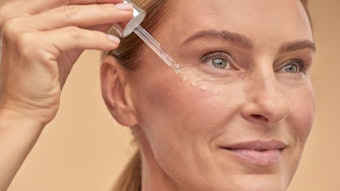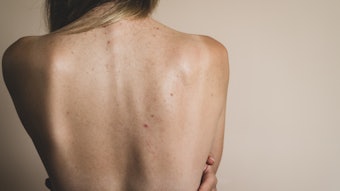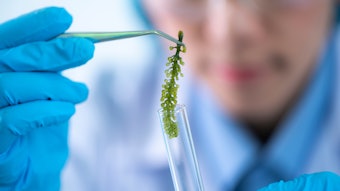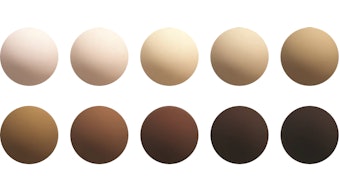
According to Glaxosmithkline (GSK) inventors, the skin care market has not yet met the need for compositions that minimize water loss from skin while also feeling cosmetically elegant.
Log in to view the full article
According to Glaxosmithkline (GSK) inventors, the skin care market has not yet met the need for compositions that minimize water loss from skin while also feeling cosmetically elegant.
Existing compositions control water loss. These include, for example, dialkyl amphiphilic components and esters of a branched fatty acid and a branched fatty alcohol; also potassium cetyl phosphate, isostearyl isostearate, behenic acid, cetyl alcohol and cetyl behenate. These seal moisture into skin by forming a layer over its surface.
Others work by bilayer lamellar gel networks. For example, one described in the literature comprises ~3-40% lecithin and a blend of HLB emulsifier gellants including ~8-30% behenyl alcohol, ~15-30% glyceryl monostearate, ~15-40% of a mixture of palmitic and stearic acids, and 0-30% of maleated soybean oil.
However, there remains a need for cosmetically elegant compositions with improved levels of occlusivity, compared with the mixtures described and products commercially sold. This was the focus of the current invention.
Novel occlusion formulation
WIPO Patent Application WO/2017/074896
Publication date: May 4, 2017
Assignee: Glaxosmithkline Consumer Healthcare Holdings (USA) LLC
According to this patent application, the present invention provides a topical composition that minimizes trans-epidermal water loss (TEWL), is convenient and easily applied to the skin and is cosmetically elegant. Specifically disclosed is a topical o/w emulsion that moisturizes and protects, repairs or restores the skin lipid barrier.
The emulsion comprises: a) a discontinuous oil phase; b) a continuous aqueous phase; c) a thickening agent; and d) at least one lamellar membrane structure including a phospholipid, a fatty alcohol and a fatty acid. Use of said composition has a water vapor transmission rate of less than ~70 g/m2/hr measured in vitro using the modWYTR test methodology.










